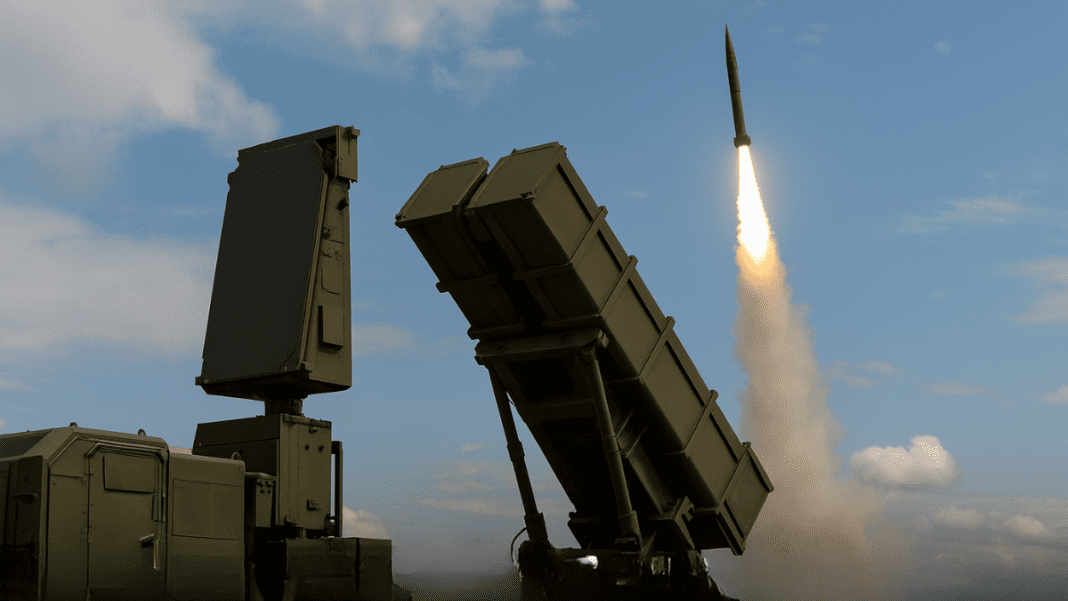Europe is facing a serious challenge. New numbers reveal that Russia is making far more ballistic missiles than Europe’s current stock of interceptors can defend against.
Russia’s Missile Surge Overwhelms European Interceptors
According to recent reports from the Ukrainian Ministry of Defense and defense expert Fabian Hoffmann, Russia is producing between 840 to 1,020 short- to medium-range ballistic missiles every year. These include advanced systems like the Iskander-M and Kinzhal missiles, which pose a severe test for existing interceptor capabilities across the continent
This marks a sharp increase from the end of 2024, when production was closer to 600–700 missiles per year. The steep rise has come from factories like the Votkinsk plant, where more than 2,500 workers have been added since 2022 to boost missile output.
In comparison, Europe’s defense systems can’t keep up. Even in the best-case scenario, Europe will have only about 695 interceptors available in 2025. These include:
- PAC-3 MSE: About 200–250 units
- PAC-2 GEM-T: Around 200–220 units
- Aster 30B1/B1NT: Roughly 190–225 units
These numbers include contributions from countries like Germany, France, and Poland. But even when combined, these systems are not enough to stop a large-scale missile attack from Russia.
🏥 30 Wounded, One National Hero Lost: Russian Missiles Shatter Morning Calm in Huliaipole
The big question defense analysts are asking: What happens if Russia launches hundreds of missiles at once? Most air defense systems require two interceptors for every one missile, known as the “2-on-1” strategy. This means Europe might only manage to respond to around 250-300 missiles at most — leaving a huge gap.
Uneven Missile Defense Across Europe
Europe’s missile defense coverage is patchy. Some countries are well protected, while others are left exposed.
Germany has placed several Patriot systems in central areas to protect its cities and industries. Poland and Romania have also received U.S.-supplied systems to strengthen their defenses along the eastern front. France uses the Aster 30 system to guard Paris and its southern regions.
However, major gaps still exist. The Baltic states — Estonia, Latvia, and Lithuania — have very limited missile defense, even though they are close to Russia’s Kaliningrad region, a known missile launch site. Similarly, countries like Greece and Bulgaria face challenges due to difficult terrain and fewer deployments.
Israel’s Controversial Move: Captured Russian Weapons from Lebanon May Go to Ukraine
To solve this, Germany launched the European Sky Shield Initiative in 2022. The plan brings together 24 countries to buy and share defense systems like IRIS-T and Patriot. One recent success came on June 25, 2025, when Sweden announced it would send seven IRIS-T units to the program.
But experts say there are still hurdles. Different countries have different spending priorities, and delays in funding could slow down progress. In the meantime, the current defense systems remain limited compared to the scale of Russia’s missile production.
Interceptors Face Real-World Missile Threats
Europe’s main missile defense relies on three systems:
- PAC-3 MSE (made by Lockheed Martin): Fast and powerful, with speeds over Mach 5 and a range of 60 miles.
- PAC-2 GEM-T: An older but still useful system with a 40-mile range.
- Aster 30B1/B1NT (by MBDA): A European system with up to 75 miles of range, used both on land and at sea.
These interceptors are designed to stop ballistic missiles like the Iskander-M and Kinzhal. But their numbers don’t match Russia’s missile surge.
The Iskander-M is a land-based missile that can travel up to 310 miles and carries a powerful 1,500-pound warhead. It has been used heavily against Ukrainian infrastructure since 2022.
The Kinzhal is even more advanced. It’s launched from a MiG-31 fighter jet, flies at Mach 10, and can hit targets up to 1,200 miles away. It also maneuvers mid-flight, making it very hard to shoot down.
In March 2023, Ukraine used Patriot systems to intercept three Kinzhal missiles. They managed to shoot down two of them. But in another incident in June 2024, one Kinzhal missile got through and killed five people in Kyiv. These real-world cases show that even the best systems sometimes fail.
Experts say that missile defense systems also struggle with other problems. These include:
- Saturation: Too many missiles launched at once can overwhelm the radar systems.
- False positives: The system might fire at something that’s not a real threat.
- Leakers: Some missiles might escape detection and strike their targets.
- Delays: Human decisions in a crisis can take time, reducing effectiveness.
Attacks Intensify: 112 Russian Drones and Missiles Wreak Havoc in Brutal Onslaught on Ukraine
Europe also depends heavily on U.S. satellites for early warning. The SBIRS system tracks launches globally and shares data with NATO. But this dependence means Europe could be in trouble if those links are disrupted. A European program called CSDP SatCom started in 2022, and there are plans to build independent satellites by 2030, but for now, reliance on American technology continues.
In tactical terms, using two interceptors per missile means Europe can only respond to about 250–300 threats per year. That’s far fewer than the 840–1,020 Russian missiles expected annually, based on the latest intelligence.

